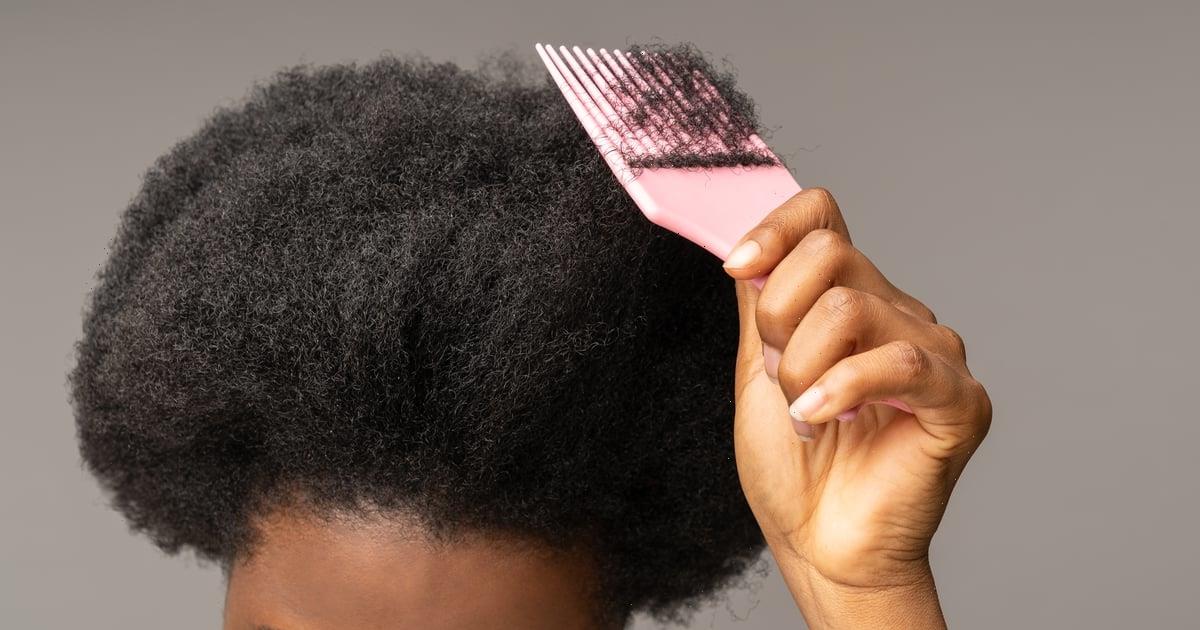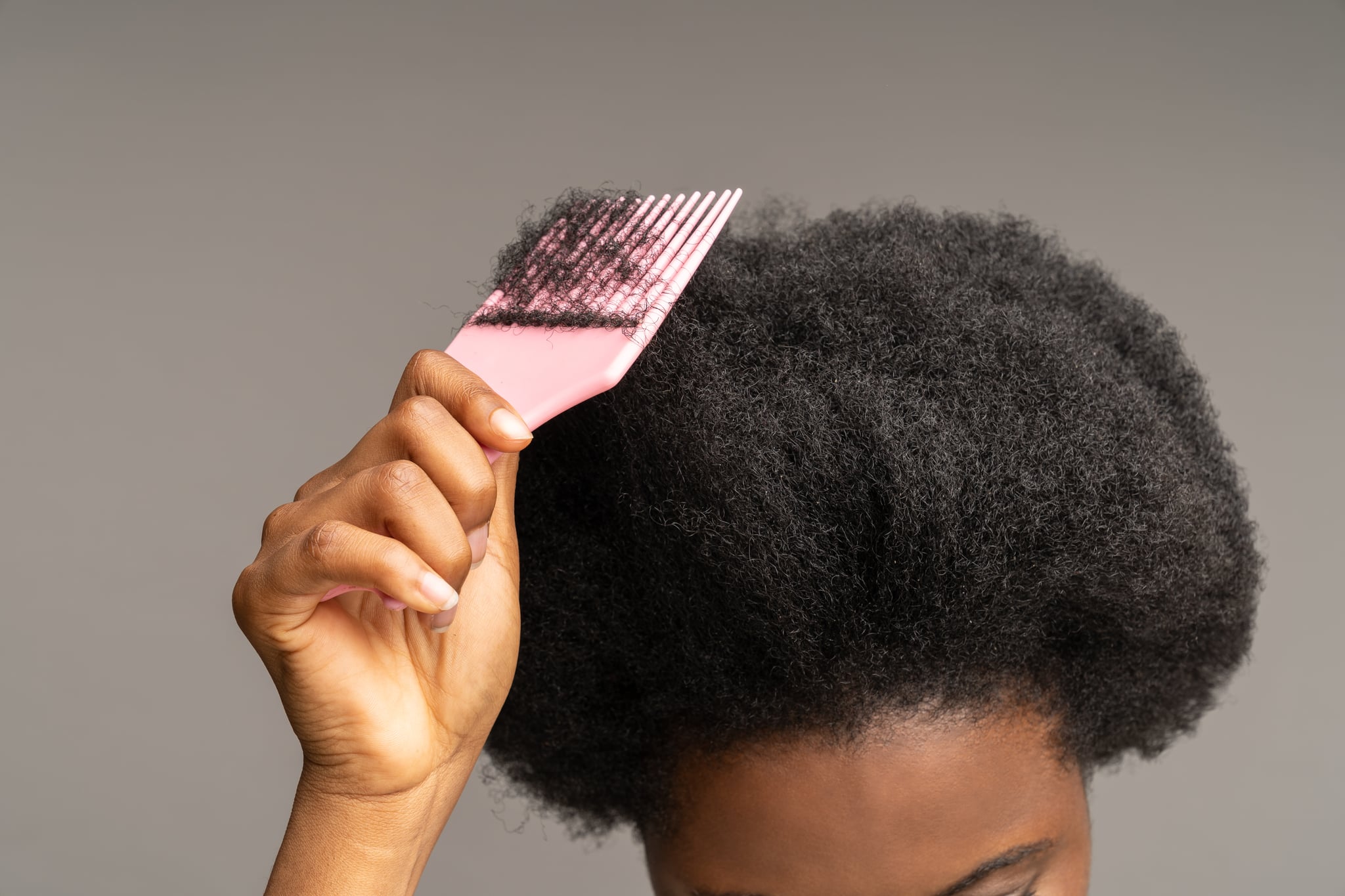Hair in the Black community is as much about community as it is about style. After all, it comes with a rich history only the people within it can fully understand, from cornrows signifying social position or tribal belonging to the politicization of Black hair in America throughout the ’60s and ’70s.
As such, Black hairstyling has always been an intracommunal act. Over the last few years, however, the gap in white stylists’ abilities to care for and style natural hair has become even more glaringly obvious. Models have relayed horrific experiences backstage during Fashion Week, as have celebrities while in the hair and makeup chair on set. There have been countless stories of damage at the hands of white hairstylists in Hollywood: Marvel’s Lauren Ridloff, “You”‘s Shalita Grant, Storm Reid, Tia Mowry, Gabrielle Union — and that’s only a sampling.
For Black professionals in the industry, this situation is just as hard to watch. “I’ve definitely seen white stylists on set not be able to work with natural hair, and it is painful for everyone,” makeup artist Ehlie Luna tells POPSUGAR. “You can try to provide emotional support to the talent, but ultimately, it’s just very awkward.”
The issue stems from a lack of education on how to care for textured hair, although that is slowly changing. Though not yet standard practice across the board, some states are making sure that natural hair care is part of the cosmetology licensing requirement. New York, for example, has a natural hair-care component in its definition of cosmetology and therefore requires a stylist in training to get experience in order for them to get licensed. Additionally, people can also acquire Natural Hair Styling licenses to further continue their education and credibility by completing a 300-hour approved course of study and passing both the New York State written and practical examinations.
What White Hairstylists Can Do to Build Trust With Black Clients
Even still, there are years of apprehension to contend with before some Black people will feel comfortable going to white stylists for hair care. “People have been skeptical, and that’s OK for the most part,” hairstylist Amy Stollmeyer tells POPSUGAR. “It’s usually due to a traumatic experience or encountering a stylist that isn’t comfortable [with natural hair].” Stollmeyer, who is white and hails from Trinidad, is well-versed in caring for natural hair, but it wasn’t because of her school curriculum. “I got a very basic textbook overview in cosmetology school, and a bit more in my additional year when I specialized in coloring, cutting, and styling. I learned most of my natural wave, curl, and coil care from watching, asking questions, and assisting other stylists around me both when I lived and worked in salons in Trinidad and with different pro teams I was a part of.”
This has made Stollmeyer extra cognizant of how she approaches natural hair, even though it’s usually with one goal in mind: optimal hair health. “I’ve always focused more on hair care with any hair type or texture,” she says. “[But] using the right curl verbiage during consultations, asking questions about a client’s hair history, and assessing what their current hair needs are in order for their hair to look and feel its healthiest [is key to making them] feel fabulous.”
To that point, the way that stylists at non-Black salons make their Black clients feel is just as important as how much experience they have working with textured hair. Beauty editor Olivia Hancock understands what it’s like to feel unwelcome, even if it wasn’t intentional by the stylist. “As I was getting a blowout, an older white man said, ‘Look at that Black gal’s hair,'” Hancock recalled. It was an experience that tainted how she viewed white salons, making her feel like an unwanted visitor as opposed to a welcomed patron. Now, Hancock looks for recommendations from someone with textured hair before working with a white hairstylist. “I’d book with them if I saw they had a proven track record of working with all hair types,” she says. “Ultimately, it’s critically important to me that the stylist prioritizes creating a safe space for clients of color and is knowledgeable on how to style textured hair.”
Luna agrees, adding that she needs to see someone’s work on TikTok or Instagram that clearly demonstrates their experience with textures similar to her own. “There’s no other way, and even then, I would need to personally be in contact with one of their clients to get a glowing recommendation. I once took a chance without one, and I will never do that again.”
What White Stylists Should Consider When Working With Natural Hair
While education is important, it will take more than learning how to work with natural hair to gain the patronage of Black customers. At a time when you can’t seem to escape horror stories of hair damage or unprofessional service, what is needed now more than ever is trust. Black people should be able to go into a dry bar just as easily as they can their regular salons and not be terrified to look at the outcome of their hairstyles. There should be no extra charges due to differences in hair texture, and they should not have to worry about patrons making them feel out of place during what should be a peaceful service. That trust is something that must be earned.
Black customers shouldn’t have to gamble with the health of their hair, but they also shouldn’t have to wonder if they belong somewhere either. Fixing this issue starts from the ground up and should include everything from training to marketing and even customer service. It’s high time the salon experience catered to the needs of every customer. In 2023, there is no more room for excuses.
Source: Read Full Article

